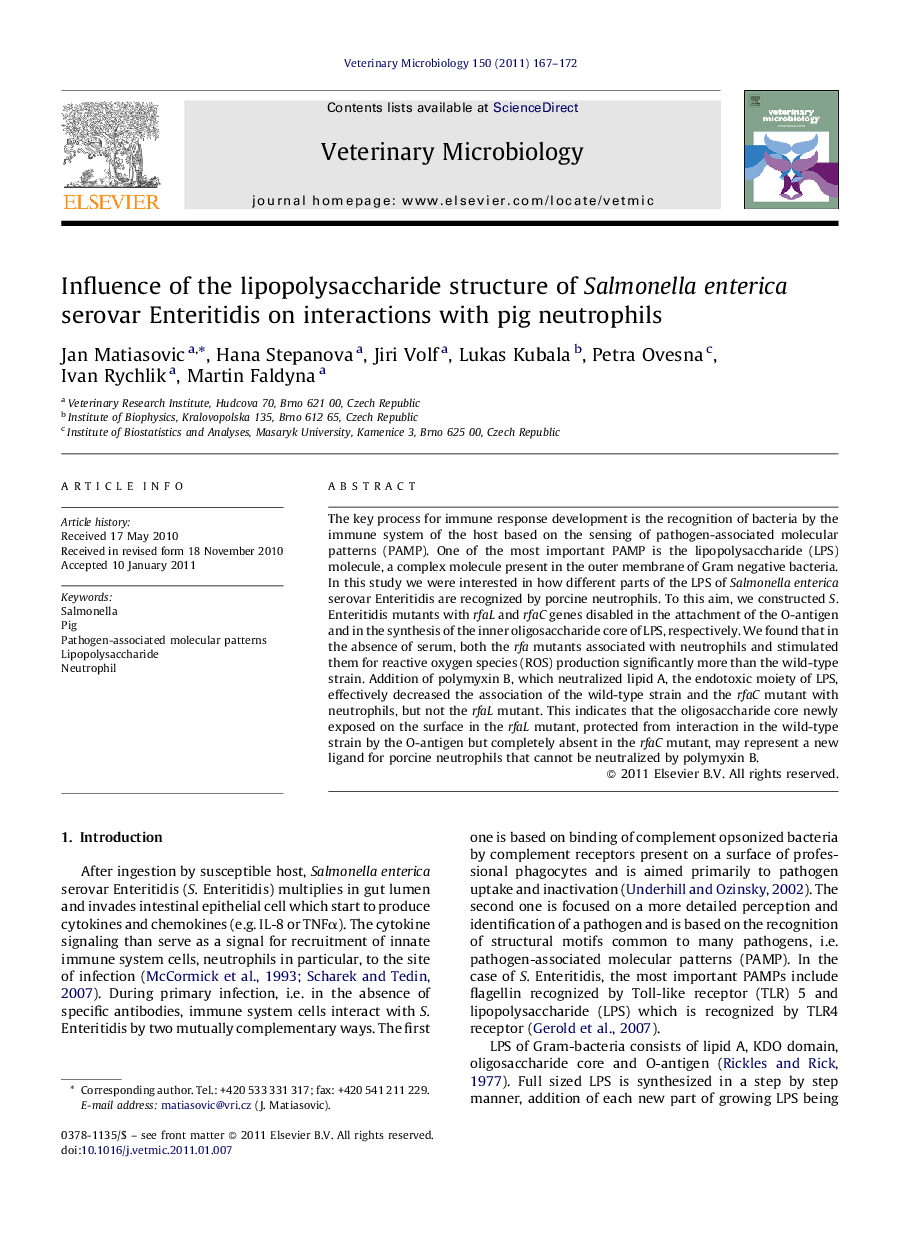| Article ID | Journal | Published Year | Pages | File Type |
|---|---|---|---|---|
| 2467650 | Veterinary Microbiology | 2011 | 6 Pages |
The key process for immune response development is the recognition of bacteria by the immune system of the host based on the sensing of pathogen-associated molecular patterns (PAMP). One of the most important PAMP is the lipopolysaccharide (LPS) molecule, a complex molecule present in the outer membrane of Gram negative bacteria. In this study we were interested in how different parts of the LPS of Salmonella enterica serovar Enteritidis are recognized by porcine neutrophils. To this aim, we constructed S. Enteritidis mutants with rfaL and rfaC genes disabled in the attachment of the O-antigen and in the synthesis of the inner oligosaccharide core of LPS, respectively. We found that in the absence of serum, both the rfa mutants associated with neutrophils and stimulated them for reactive oxygen species (ROS) production significantly more than the wild-type strain. Addition of polymyxin B, which neutralized lipid A, the endotoxic moiety of LPS, effectively decreased the association of the wild-type strain and the rfaC mutant with neutrophils, but not the rfaL mutant. This indicates that the oligosaccharide core newly exposed on the surface in the rfaL mutant, protected from interaction in the wild-type strain by the O-antigen but completely absent in the rfaC mutant, may represent a new ligand for porcine neutrophils that cannot be neutralized by polymyxin B.
